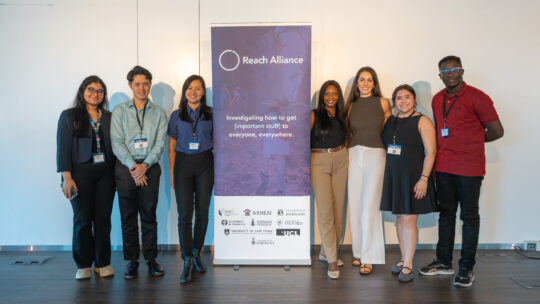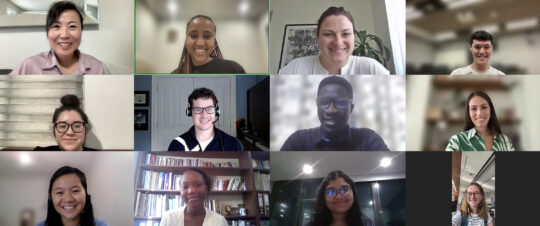
Can you tell us about what you do as a Sr. Data Analyst with McKinsey & Company?
I measure behaviour change in people. I study and quantify how people make decisions, I gauge their disposition towards certain activities and study the environmental context that makes those decisions and activities more probable.
I am motivated by understanding why and when people do the things they do— especially studying scenarios where traditional incentives don’t work. I find it powerful to use behavioural analytics to tell a narrative about how people behave.
Can you tell us about an interesting project that you’re working on now?
I’m currently focused on measuring behaviour change in the context of capability building for learners. It’s incredibly rewarding understanding broad patterns in how people behave as learners. I have to improve the quality of data inputs and subsequently, the way we model that data to tell a narrative about individual learners and their propensity to engage with content.
How has your role been impacted by the COVID-19 pandemic? What strategies have you (personally and as an organization) adopted to be able to complete your work remotely?
I’ve been fortunate since the type of work I do is flexible for in-person or remote engagement.
Speaking generally, I think my version of ‘adapting’ has just been the natural byproduct of ‘accepting’. In other words, I don’t have a list of things I’ve done to better adapt. I just accept this moment for what it is— I don’t try to pretend it’s better or worse than it is. Perhaps this mindset is itself somewhat liberating.
How did your experience in Reach inform your career path?
Reach, I often say, was one of the most enriching experiences in my personal and early professional life. We were entrusted with a unique opportunity to own the end-to-end research process and this is quite rare, especially for undergraduate students.
It was in South Africa where I learned that I want to dedicate my academic and professional life to trying to make sense of complicated human phenomena. For me, Reach has been all about synthesizing complicated narratives about how people and institutions organize. Sometimes those narratives are about incentive structures or institutional nudges that create extraordinary outcomes. In this way, my involvement with reach didn’t just inform my career path but rather, it was the impetus.
What takeaway did you get through your experience as a Reach researcher that you are applying to your work now?
The experience taught me how to be dogged, rigorous and persistent in research— I don’t say this in a tokenistic way. We were trying to find perspectives on truly challenging and multi-dimensional issues. We were dealing with cultural considerations that we had to be astutely aware of, information discrepancies and the challenges of unexpected travel in unfamiliar places. In light of all this, the task was to make the most of what we were dealt with— we were dogged and rigorous in our approach.
What is your fondest memory from your experience in Reach?
I think back to some of the conversations with Professor Wong and the research team. Simply put, we all just really liked each other (it’s an odd thing to say but this doesn’t always happen so naturally). The team’s bond made everything that was challenging in terms of the research process, entirely worthwhile.
Also, Matthew McConaughey was on our flight back from Cape Town and I remember going up to him to ask for a picture, to which he replied “oh no thanks man”. That was a pretty fond memory.
What would you recommend to Reach researchers who are thinking about how to visually represent their data in order to best tell the story of their case study?
Don’t try to impress with visualizations, just be clear. Do the simplest thing you can to convey one point at a time.
Also, narratives happen at different ‘altitudes’. The same empirical situation can be explained from a 30,000 foot view or from a 2 foot view.
Let me offer an analogy. I’m a big basketball fan— a Raptor fan, specifically. Let’s say the situation is that the Raptors lost a game. The 30,000 foot view would be exactly that— the Raptors lost their game. The 2 foot view however, might be that they lost the game by 1 point to the best team in the NBA while missing 3 of their best players— technically still a loss but a ‘win’ for all intents and purposes.
Depending on the altitude of data you choose to anchor your visualization, the narrative changes entirely.



